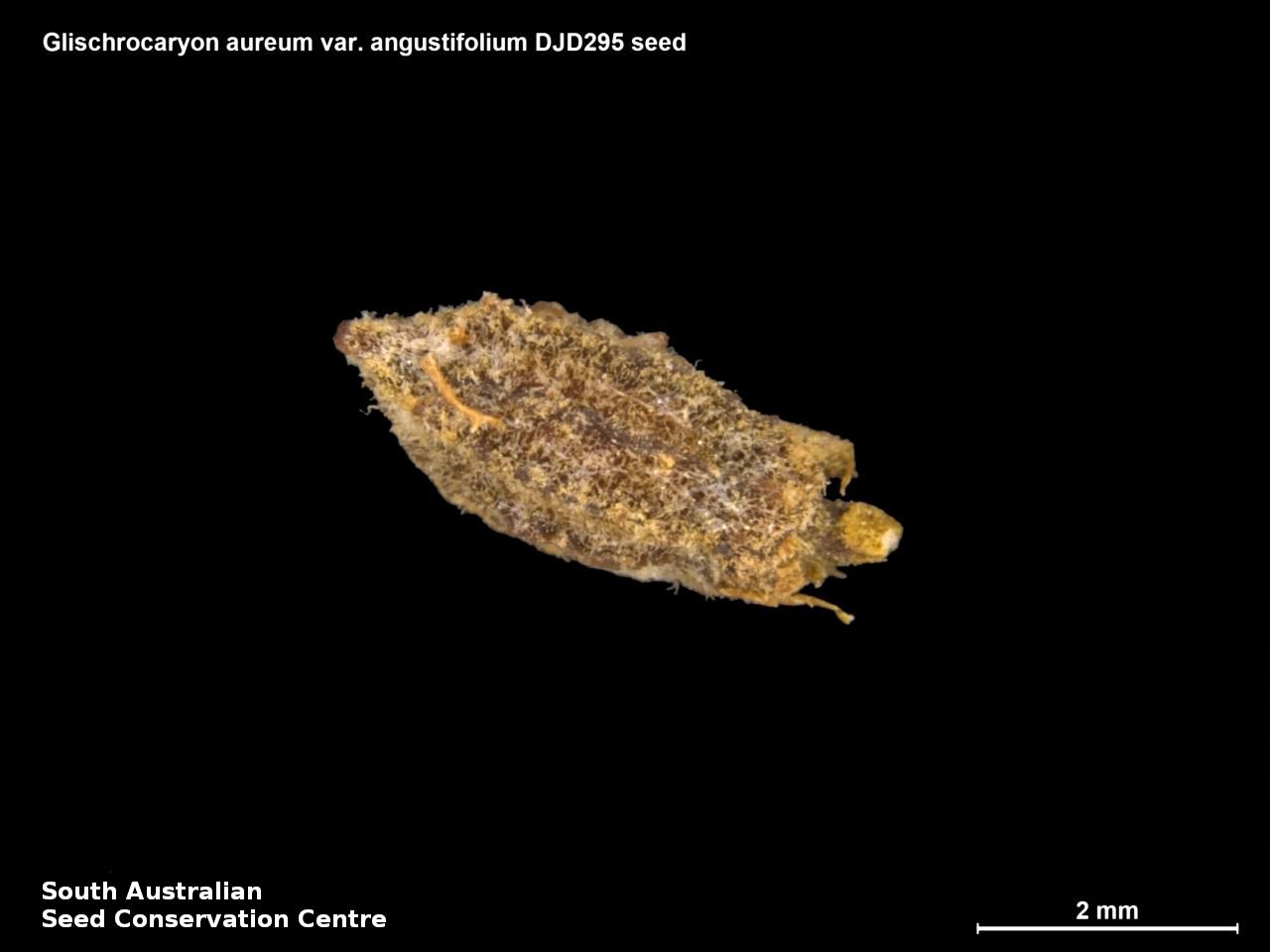



Prior names
Glischrocaryon aureum var. angustifolium
Loudonia roei, partly
Loudonia aurea var. angustifolia
Common names
Yellow Pop-flower
Golden Pennants
Etymology
Glischrocaryon from the Greek 'glischros,' meaning gluey, clammy, slippery and 'caryon' meaning a nut, referring to the genus having succulent fruit when it was thought erroneously, to belong to the Family Santalaceae, several species of which do have succulent fruits. Angustifolium from the Latin 'angustus' meaning narrow and 'folium' meaning leaf.
Distribution and status
Found on the Eyre Peninsula and in the north-western corner of South Australia growing on sandplains, sandy rises and dunefields. Also found in Western Australia and the Northern Territory. Native. Common in South Australia. Uncommon in the Northern Territory. Common in Western Australia.
Herbarium regions: North Western, Gairdner-Torrens, Eyre Peninsula
NRM regions: Alinytjara Wilurara, Eyre Peninsula, South Australian Arid Lands
AVH map: SA distribution map (external link)
Plant description
Multi-stemmed perennial herb to 65 cm high, with glabrous and often grey, or bluish-green stems and leaves. Juvenile leaves are terete to 7 mm long and 0.5 mm wide; crowded and channelled above. Adult leaves are alternate, sometimes much reduced and scale-like; sessile, linear to linear-lanceolate, flat; to 40 mm long and 1.5 mm wide with entire margins. Inflorescence in terminal clusters with 7-31 yellow to yellow-green flowers. Flowering between August and December. Fruits are yellow or reddish-tinged pear-shaped papery fruit to 11.5 mm long; glabrous with 4 longitudinal wings. Seeds are brown,ovoid seed to 4 mm long and 2 mm wide with a tuberculate surface texture.
Seed collection and propagation
Collect seeds between October and January. Collect fruit that have developed wings and the seed in the middle is hard. Place the fruit in a tray and leave to dry for a week or two. Seeds can be stored with the wings or you can rub the dried fruit with a rubber bung to dislodge the seeds. Use a sieve to separate any unwanted material. Store the seeds with a desiccant such as dried silica beads or dry rice, in an air tight container in a cool and dry place. From one collection, the seed viability was high, at 85%.
| Location | No. of seeds (weight grams) | Number of plants | Date collected | Collection number Collection location | Date stored | % Viability | Storage temperature |
|---|---|---|---|---|---|---|---|
| BGA MSB | 14,200 (85.6 g) 14,200 (85.6 g) | 50+ | 5-Nov-2005 | DJD295 Eyre Peninsula | 1-Aug-2006 | 85% | -18°C |
Number of plants: This is the number of plants from which the seeds were collected.
Collection location: The Herbarium of South Australia's region name.
% Viability: Percentage of filled healthy seeds determined by a cut test or x-ray.